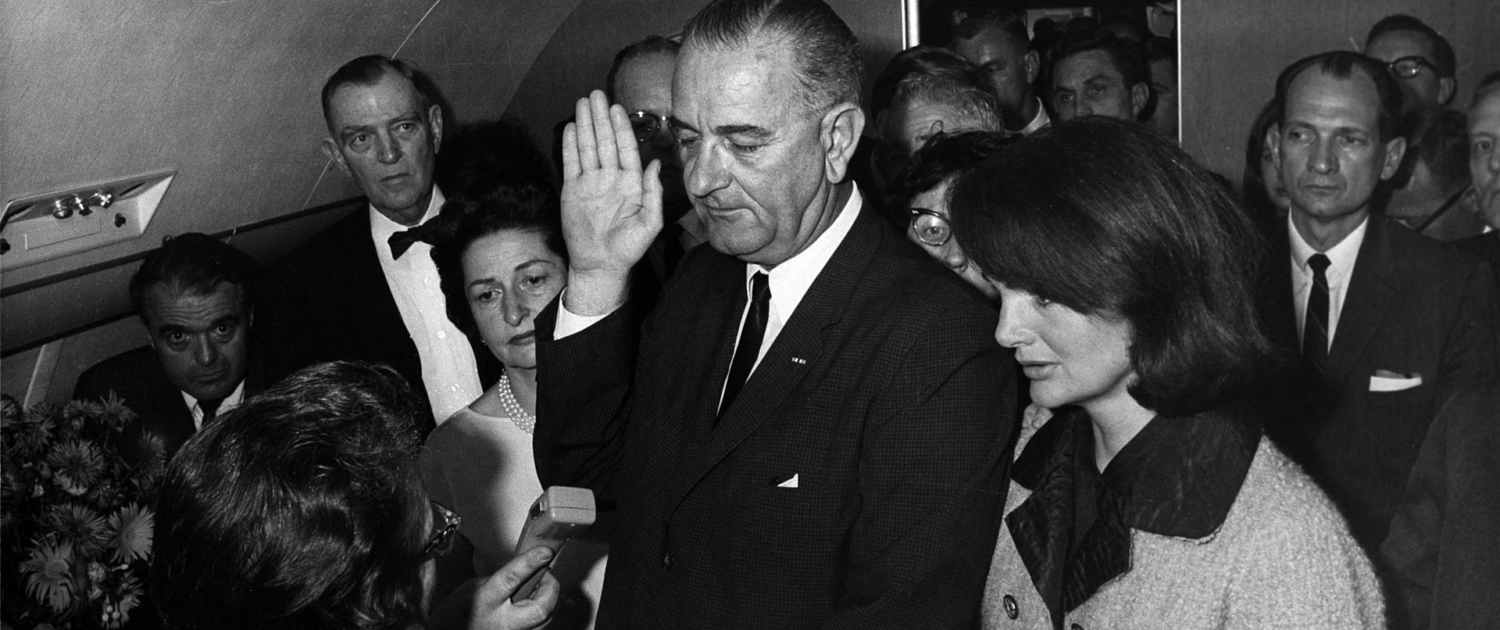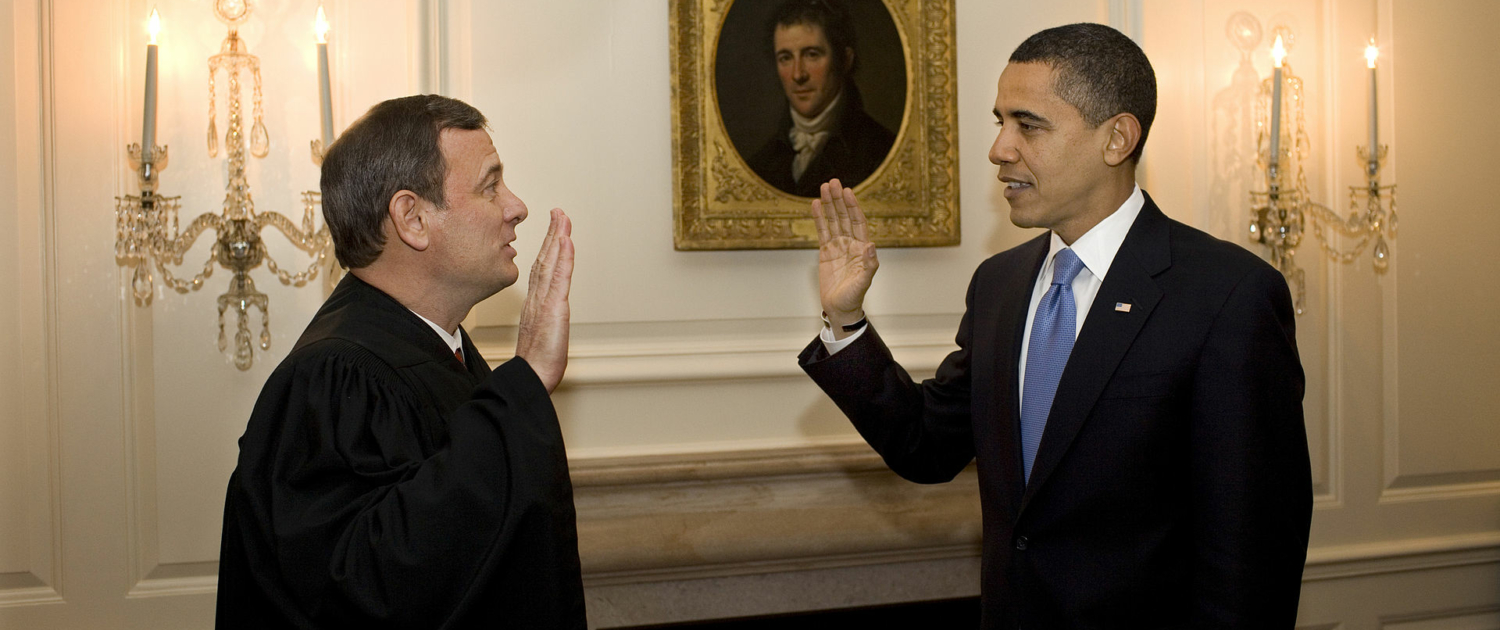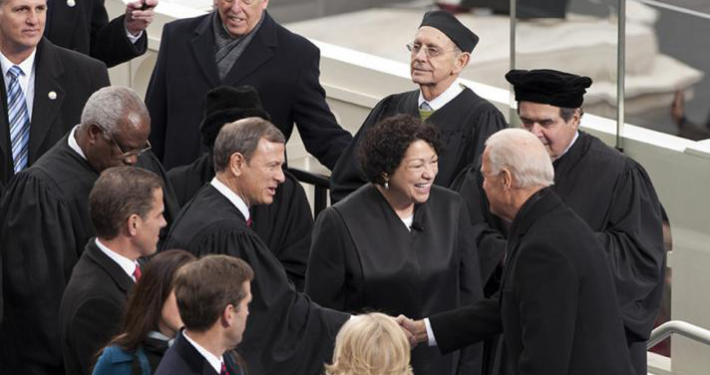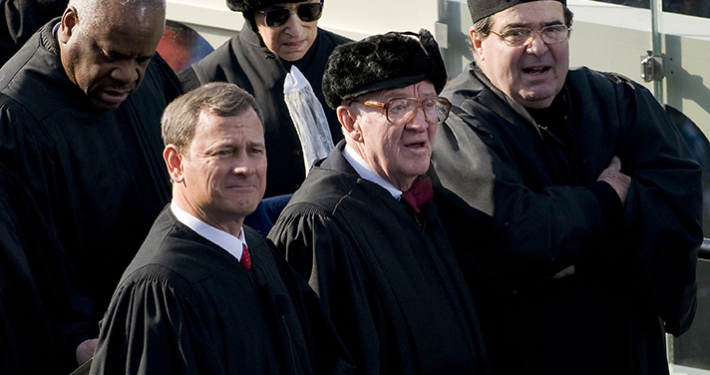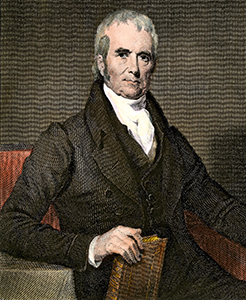Pop Civ 1: The Peaceful Transfer of Power: Oaths and Inaugurations
Current Event
Introduction
Joe Biden will become president of the United States at noon on January 20. Chief Justice John Roberts, in keeping with longstanding tradition, will administer the oath of office, while Justice Sonia Sotomayor will swear in Vice President-Elect Kamala Harris. In the midst of a pandemic and on the heels of a mob storming the U.S. Capitol January 6, it was announced that this year’s inauguration day has been “reimagined” from others. Outgoing President Trump Tweeted he won’t attend. While noteworthy, he isn’t the only outgoing president to decline the invitation. A look at three inaugurations – the first each of Thomas Jefferson, Lyndon Johnson, and Barak Obama – reveals that while inaugurations rely a little on the Constitution and heavily on symbolic and strategic traditions, each one is slightly retooled to ensure continuity of government and the peaceful transfer of power.
Thomas Jefferson’s Inauguration, 1801
On March 4, 1801, outgoing President John Adams left the White House and D.C. before dawn. His political opponent, Thomas Jefferson, would be inaugurated as third President of the United States at noon. The outgoing President wanted to put as much distance between himself and the new Administration as he could.
At President-Elect Jefferson’s request, the new Chief Justice John Marshall would be administering the oath of office. Marshall was a Federalist like Adams. He admired George Washington and shared much of the same outlook on the U.S. Constitution as Alexander Hamilton. Marshall had served in Congress for part of a term, only to be plucked out by President Adams to serve as Secretary of State—a position that he continued to hold for a time even after Adams appointed him to the Supreme Court. Everything in Marshall’s background—other than being a fellow Virginian—put Marshall at odds with Jefferson.
Incoming President Jefferson was the leader of the political party, the Democratic-Republicans, born during the 1790s in opposition to Hamilton’s financial plans, Washington’s foreign policy, and other actions of the Washington and Adams administrations. The transfer of power from Adams to Jefferson on March 4, 1801, put the new experiment in American self-government to the test. Its peaceful accomplishment was a crucial turning point in American history, for it easily could have been the end point.
Jefferson’s choice of Marshall to administer the oath complemented the conciliatory rhetoric of his inaugural address.
“Every difference of opinion is not a difference of principle,” Jefferson said, “we are all Republicans, we are all Federalists.”
Jefferson’s pick of someone the public strongly associated with the outgoing administration might be analogized in today’s context to President-Elect Biden asking Justice Gorsuch, Kavanaugh, or Barrett to administer the oath of office to him.
This letter written by John Marshall to Charles Cotesworth Pinckney captures the drama of the historical moment. Marshall and Pinckney were both Federalists. A few years earlier, they had served together in attempting to negotiate with France to stop American shipping from being attacked. That mission ended with what has become known as the XYZ Affair, the letters standing in for the names of three people who tried to solicit bribes from the American delegation in France. More recently, Pinckney was a failed candidate for vice-president in the election of 1800.
At the opening of the letter, Marshall writes of his intent to administer the oath to Jefferson at noon that day, March 4. He takes a reflective tone as he mentions his surprise at individuals he believes will attend the ceremony and outlines his worries for Jefferson’s administration.
Marshall’s writing resumes with the entry “4 OClock,” indicating that time has elapsed, and that the oath had been administered. His modest paise of Jefferson’s inaugural address is consistent with his remarks about Jefferson earlier that day—while he has no love of the man’s political party, he seems to respect Jefferson’s attempts to reconcile the new nation’s divisions.
What the Constitution Says about Oaths and Presidential Inaugurations
Securing the Continuity of Government
Lyndon Johnson’s Oath, 1963
During national emergencies, the honoring of tradition is less important than ensuring the transfer of power. After President John Kennedy’s 1963 assassination in Dallas, Vice President Lyndon Johnson needed to take the oath of office as swiftly as possible. Rather than wait until the Chief Justice could be brought to Dallas, it was recommended that a federal judge administer the oath. From Johnson came the directive: “Get me Sarah Hughes.” Sarah Tilman Hughes, at that point only two years into her tenure as a federal district court judge in northern Texas, was a personal friend of Johnson and a supporter of the Democratic Party. She quickly made her way to Love Field in Dallas, where Air Force One was waiting with Johnson aboard.
The ceremony that followed included several historical firsts. Hughes would become the first (and to date, only) woman to administer the presidential oath of office. It was also the first and only time that the oath had been administered aboard an airplane. And rather than using a Bible, the traditional choice for all previous Presidents, Johnson selected a Missal from a table in Kennedy’s Air Force One bedroom as the text upon which he swore his oath.
Lyndon Johnson taking the oath of office aboard Air Force two hours and eight minutes after the assassination of John Kennedy. Jackie Kennedy (right), still in her blood-soaked clothes, looks on as Judge Sarah T. Hughes administers the oath of office. Photo: Cecil Stoughton, White House
Chief Justices Make Mistakes, Too!
Barak Obama’s Inauguration, 2009
Anyone who has spoken in public has likely felt worried that they might slip up, forget a part of their speech, or mispronounce a word.
Evidently, even chief justices are not immune from that pressure. At President Barack Obama’s first inauguration in 2009, Chief Justice John Roberts accidentally transposed two words in the oath. Roberts prompted the president to repeat “that I will execute the Office of President of the United States faithfully,” although the language in the Constitution explicitly requires the President to say, “I do solemnly swear that I will faithfully execute the Office of President of the United States …”
Although the error was minor, concerns immediately arose that perhaps President Obama’s oath would be invalidated. To rectify the problem, Roberts visited the White House the following day to repeat the ceremony. Thankfully, both the Chief Justice and President were more silver-tongued in their delivery that day, and the oath was successfully administered.
To avoid any constitutional problems, Chief Justice John Roberts administers the oath of office a second time to Barack Obama in the Map Room of the White House on Wednesday, January 21, 2009. Photo: Pete Souza, White House
Supreme Fashion
While the lavish inauguration balls are often known for their fashionable moments, the 2009 Obama inaugural ceremony itself featured several Supreme Court Justices sporting interesting millinery. Whether a nod to chilly Washington weather or an expression of personal flair, the unusual caps elicited a range of reactions from onlookers!







